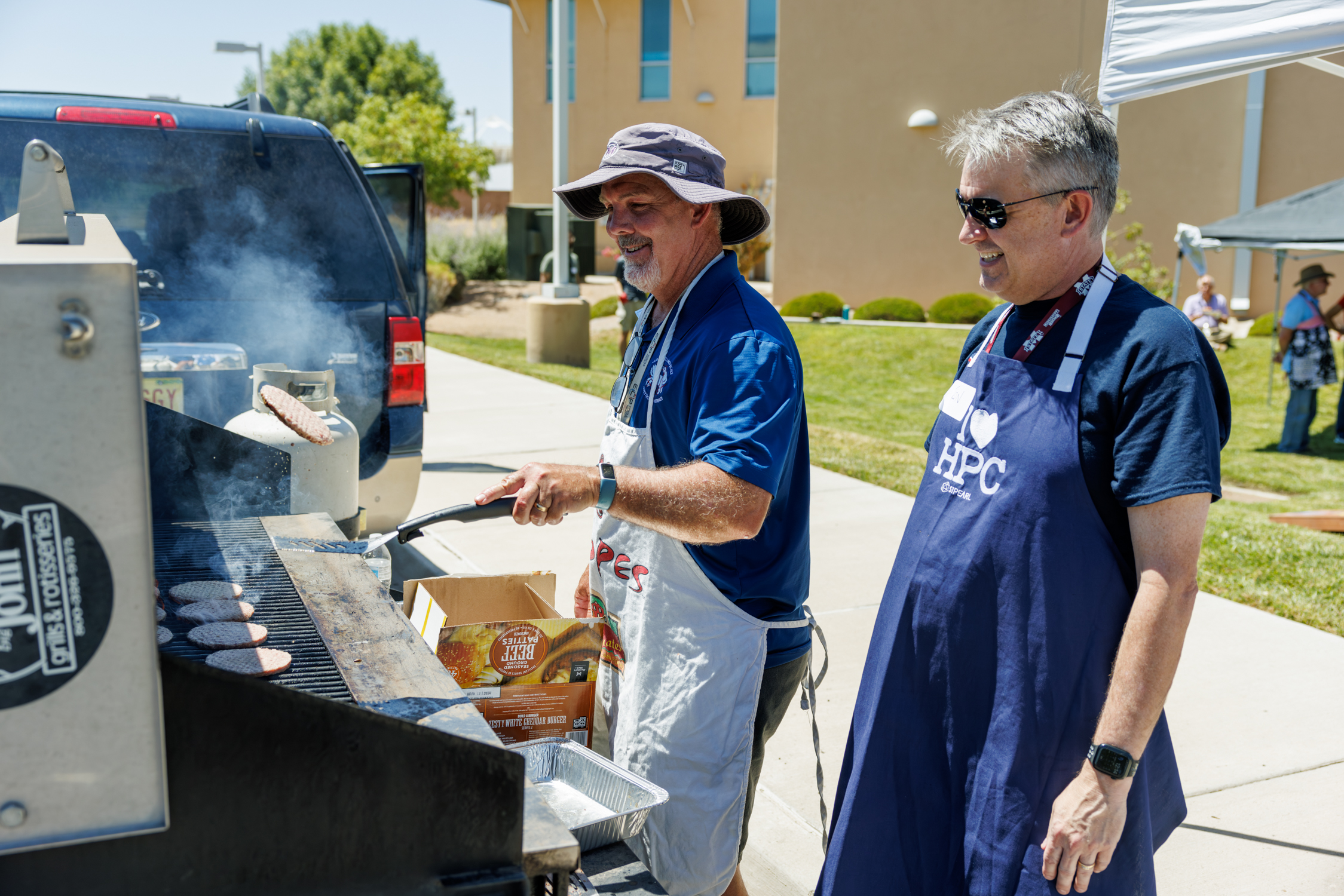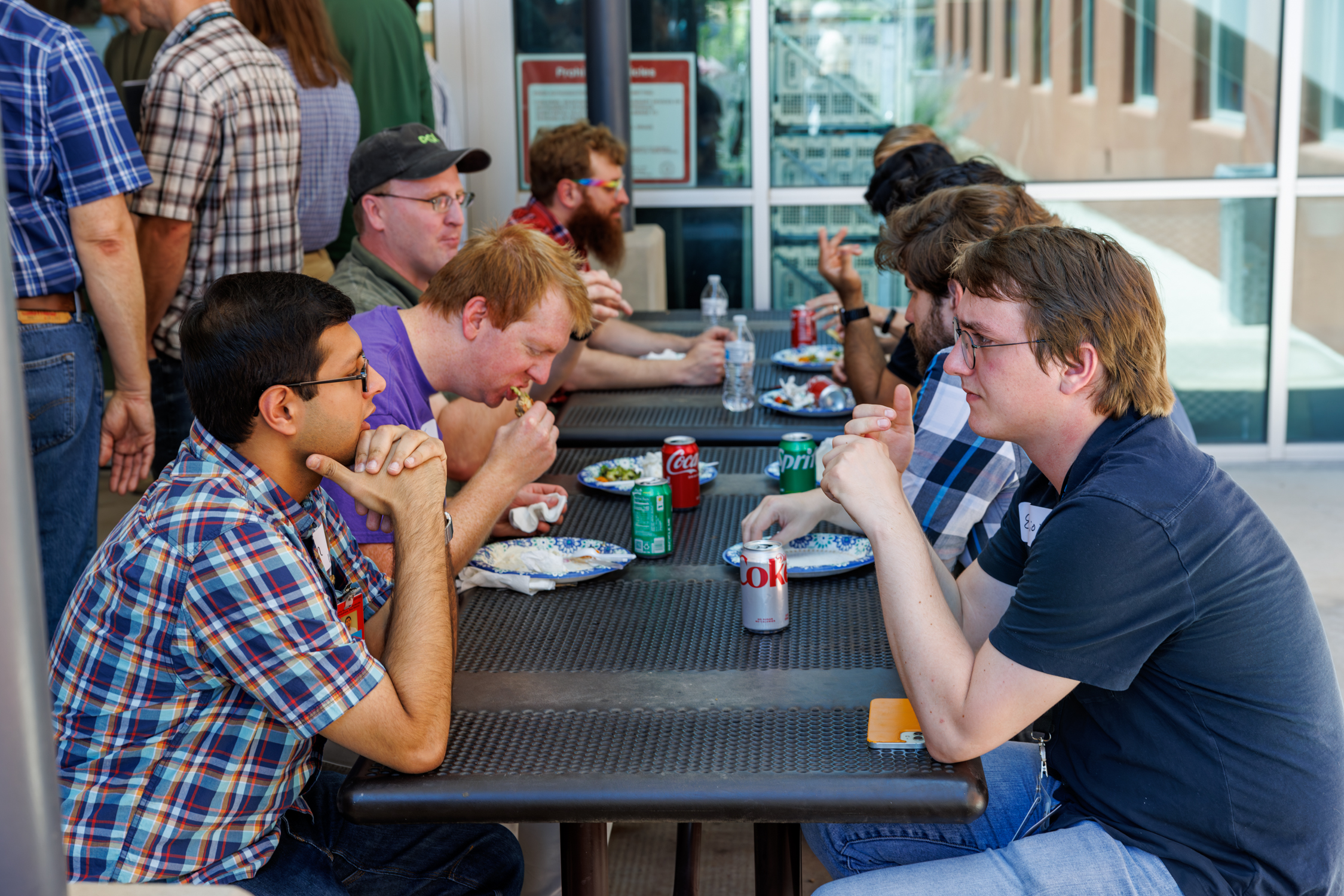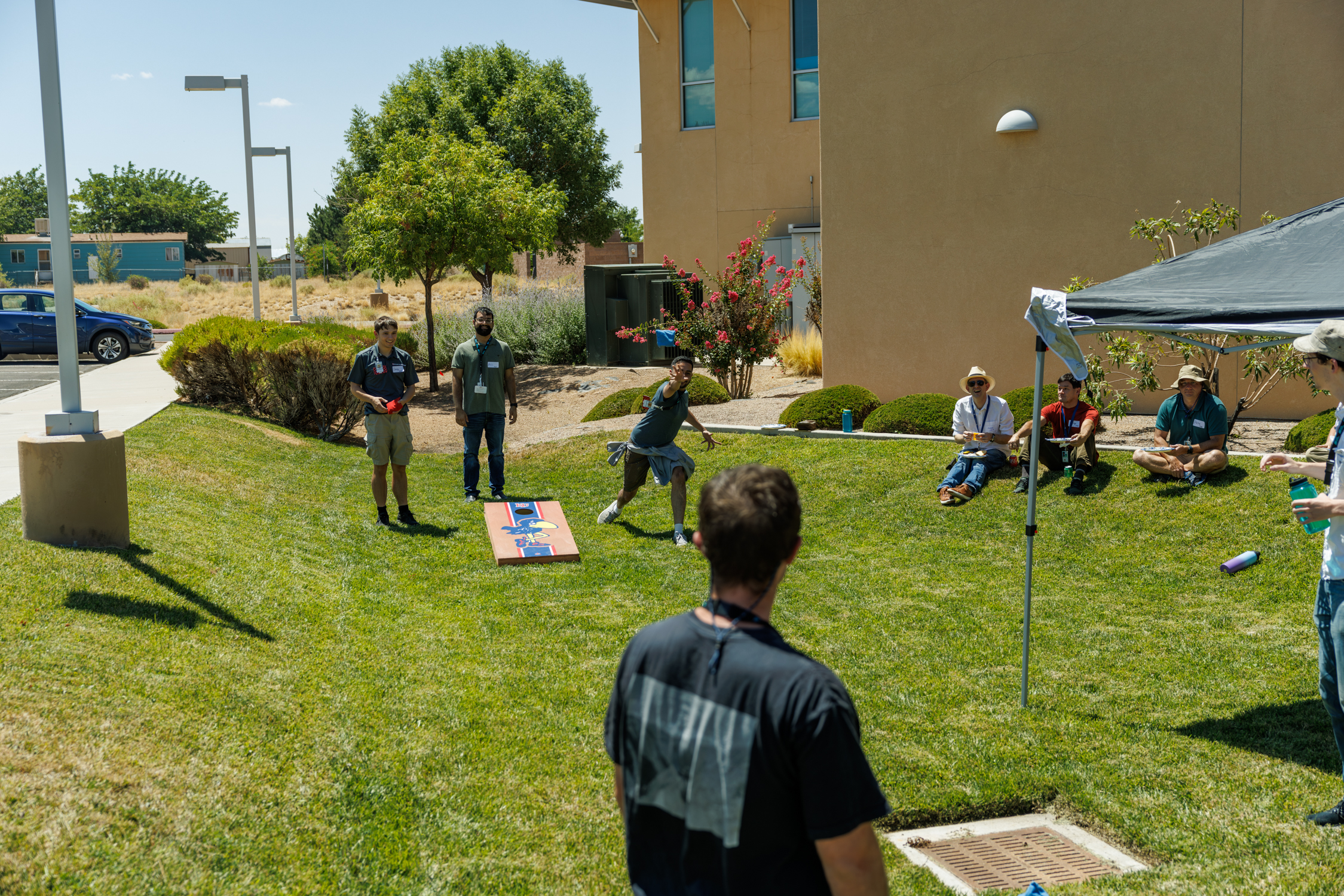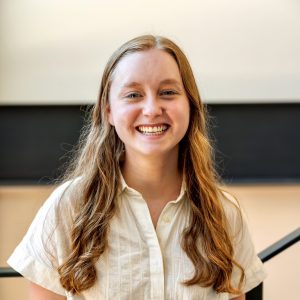There are many potential pathways to being an intern in the CCR. Students have been hired through the following programs (and more):
- Computer Science Research Institute Summer Program
- Mathematics and Analytics Research Technical Internship for Advanced National Security (MARTIANS)
- Sustainable Horizons Institute Sustainable Research Pathways Program
- National Nuclear Security Administration Minority Serving Institutions Internship Program
- National Nuclear Security Administration Minority Serving Institutions Partnership Program
- Rio Grande Consortium for Advanced Research on Exascale Simulation (Grande CARES; Sandia Lab News article on this consortium here)
- National Science Foundation Mathematical Sciences Graduate Internship
- University Research Association Fellowship
Given the wide breadth of computational research performed in the CCR, there are opportunities for a wide range of project topics for students, both graduate and undergraduate.
Students have the opportunity to participate in activities outside of their research projects, such as
- seminars on research in the CCR
- facility tours
- career development programming
- a summer BBQ:



Previous Student Profiles
Daniel Sharp

Daniel had his summer internship experience as a rising 3rd year PhD student in the Computational Science and Engineering program at Massachusetts Institute of Technology. He worked with Bart van Bloemen Waanders to implement the magnetohydrodynamics (MHD) equations in a Sandia-developed software built on Trilinos, with the long-term goal of controlling instabilities and estimating model discrepancy. MHD describes the dynamics of charged fluids in the presence of electromagnetic fields, and MHD is used to represent important phenomena in the natural world, e.g., solar flares, and in engineering applications, e.g., plasma dynamics in pulsed reactors like Sandia’s Z-pinch device (more information on MHD can be found here). Daniel has been able to leverage autodifferentiation capabilities provided through Trilinos to enable gradient-based calibration of parameters in the MHD equations for estimating external flow force through a channel, trying to compare traditional PDE-constrained optimization tooling and Bayesian inversion.
What did you appreciate about your internship? As an early-career graduate student, the freedom I had in my research direction over the summer was really nice. I appreciate that the staff are both very accomplished in their respective fields and are available and happy to spend time talking to interns who want to learn from them. There is a wealth of experts in a range of technical areas that you have access to when you intern here. Also, New Mexican food is great! Even as a vegetarian, I could have eaten it every day and at the end of the summer I would still regret not eating enough of it.
Natalie Wellen

Natalie had her summer internship experience as a PhD candidate in the University of Washington Applied Mathematics department. She worked with mentor Rich Lehoucq to establish conditions under which preconditioned conjugate gradient (PCG) can be used to solve for a Markov chain potential, given the Markov chain’s probability transition matrix. Markov chains are stochastic models describing a sequence of possible states, where the probability of each future state depends only on the current state. They are used to model a range of phenomena, including animal population dynamics, search engine algorithms, and stock market dynamics. Markov chain potentials are a set of deterministic linear equations that can be used to solve for probabilistic properties of the Markov chain, including the average hitting time. These properties make Markov chain potentials useful when considering optimal control of a system, such as electrical networks. For Markov chains with many possible states, iterative solvers such as PCG are more efficient and less error prone than directly solving for the potential. When it can be applied, PCG is the advantageous iterative solver relative to the more generally applicable biconjugate gradient stabilized method (BICGSTAB), because it is guaranteed to converge and there’s a clear relationship between the calculated residual and the error bound of the original problem (this also means PCG errors converge faster than BICGSTAB errors). Natalie worked on identifying less restrictive properties of the Markov chain’s probability transition matrix under which PCG is applicable. She also worked on identifying sub-conditions for symmetrizing the probability transition matrix that ensure PCG is computationally tractable when solving for the Markov chain potential.
What did you appreciate about your internship? I really liked getting to meet a variety of staff members. When people say you can just reach out to anyone at Sandia and ask to talk about their work, they’re telling the truth. I also appreciate that the other interns are working in a range of areas in computational science, so I’ve been able to learn about things outside my specific research area, like chemistry and machine learning. These conversations have even led to me collaborating on a chemistry project. It’s been a very supportive environment amongst the interns, which has been wonderful.
Teddy Meissner

Teddy had his summer internship experience as a rising 3rd year PhD student in the Applied Mathematics program at The University of Arizona. He worked with mentor Pavel Bochev to study if and when the theory of numerical partial differential equations (PDEs) can be translated to Physics-Informed Neural Networks (PINNs). PINNs are best thought of as a data free collocation method which looks to minimize the residual of a PDE over a defined set of points. PINNs have shown potential to be much more computationally efficient than numerical solutions to PDEs, making them advantageous for outer-loop analyses such as design optimization or uncertainty quantification. Theory indicates that as a universal approximator optimal convergence rates for training PINNs can be achieved, but due to the many parameters and nature of nonlinear optimization, the exact conditions when that is the case are unclear. To explore this question, Teddy performed numerical studies of convergence rates for PINN solution to the steady state incompressible Stokes equations with different boundary conditions. Additionally, he explored if and when theoretical results for optimal loss functions stemming from elliptic regularity theory can be translated into PINNs.
What did you appreciate about your internship? I appreciate how collaborative and interdisciplinary the internship environment is. It’s opened my eyes to many of the practical research problems I had never thought of before and has helped me build confidence in my ability to communicate with people outside my research subdomain. The lack of hierarchy and team atmosphere is nice: I got to integrate into a team of about 10 staff , and they care about my opinions and trust my expertise on my project. As someone who likes mountain biking and outdoor activities in general, Albuquerque is phenomenal. I am staying in the East Mountains and I mountain bike a lot.
Rileigh Bandy

Rileigh had her summer internship experience as a PhD candidate in the Computer Science program at University of Colorado Boulder. She worked with mentor Teresa Portone on quantifying uncertainties and model-form errors in gas-surface chemistry models of ablation during hypersonic flight. During hypersonic flight, air reacts with a re-entry vehicle’s thermal protection system (TPS), causing the recession (or ablation) of the TPS. Accurately modeling this phenomenon is critical to assessing TPS performance. Novel finite-rate gas-surface chemistry models are advancing state-of-the-art in TPS ablation modeling, but there are significant uncertainties in the models, both in terms of appropriate reaction rates, but also in terms of which species are most relevant. Rileigh worked to characterize these uncertainties and measure their importance to key quantities of interest for ablation modeling relating to TPS recession. She also worked on characterizing the effect of neglected or missing species in the governing equations.
What did you appreciate about your internship? I appreciate the fact that I get to collaborate with experienced interns, postdocs, and staff on my research project. I have had the opportunity to apply my thesis research to real-world applications like compartmental infectious disease models and ablation models for hypersonics. I also gained a mentor (and a thesis committee member) that has exposed me to new research and is invested in my success.
Computer Science Research Institute Summer Program
The Computer Science Research Institute (CSRI) at Sandia creates technology and solutions for many of our nation’s most demanding national security challenges. The Center’s portfolio spans the spectrum from fundamental research to state-of-the-art applications. Our work includes computer system architecture (both hardware and software); enabling technology for modeling physical and engineering systems; and research in discrete mathematics, data analytics, machine learning, quantum information and computing, cognitive modeling, and decision support materials.
The CSRI enterprise is closely tied to the laboratories’ broader set of missions and strategies. Application areas include nuclear weapons, cyber security, and energy and CO2 challenges such as climate modeling, alternative energy technologies, and improvements to the power grid. We also share responsibility within Sandia as stewards of important capabilities for the nation in high-strain-rate physics, scientific visualization, optimization, uncertainty quantification, scalable solvers, inverse methods and computational materials.
Summer students should apply and submit their resumes at Student Internship Programs
